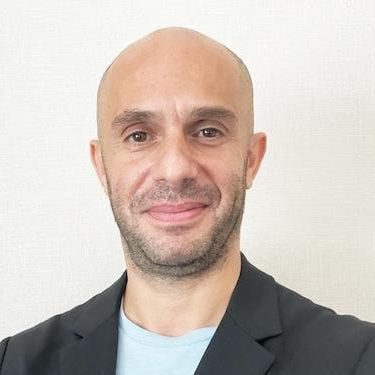
If the Covid-19 pandemic has made one thing evident in the past months, it is the fact that the media should restrain itself and act responsibly. It should stop feeding the coronavirus hysteria with daily infection and death statistic updates which are carelessly presented and often misinterpreted. Draconian measures were taken around the globe based on emotions and estimations of non-validated data. This is a dangerous precedent for the future.
By Arthur Blok
One of the most outstanding scientists and activists of the 20th century, Linus Pauling, once said, “Science is the search for the truth, the effort to understand the world. It involves the rejection of bias, of dogma, of revelation, but not the rejection of morality.” Pauling is one of four individuals to have won more than one Nobel Prize; he earned the Nobel Prize in Chemistry in 1954 for his scientific skills and the Nobel Peace Prize in 1962 for his peace activism.
The above quotation could not be more accurate today. With some exceptions, the world has entered a dangerous phase where national and international health institutes have lost common sense. They are overrating their roles; thus, as a direct consequence, they are misinforming the governments they are supposed to serve. Harsh actions are undertaken with far-reaching effects based on assumptions and computer models. Decisions have been made in reaction to emotional calls from the public, which, in its collective anxiety, almost demands a state-led panic.
We are now a couple of months into the crisis, and countries still lack reliable data on the frequency of the Covid-19 virus in a representative random sample of the general population. A fair question on that perspective is: based on which valid scientific data is it justified to order the closure of airports, forcing people into social lockdowns and shutting down economies? Where is the data to support these severe measures? Do the expected health benefits measure up to the dramatic consequences that will be felt for years to come? Most mainstream media collectively have forgotten to ask these questions.
Stasi methods
In some European countries, the United Kingdom and the Netherlands, and other parts of the world, new Stasi methods are getting dangerous levels of support from the general public. Local police are advertising portals, special telephone numbers, and even launched applications for its citizens to inform their neighbours for breaking the ‘social distancing’ rules; the late Stasi-chief, Erich Mielke, would be proud.
Police call centres are now answering calls from ‘worried’ neighbours that call to say their neighbour went out for a second or third time a day or that they hosted a group of friends at home. In weeks, we created a global Orwellian society 2.0 where it is broadly accepted that the police will use drones to see if people obey the rules with speakers attached to warn people to go back home in their social lockdown. This is for our safety, of course.
Owing to the media-fed hysteria, everyone is now a viral expert. For weeks, global media outlets have reported daily the consequences of the corona crisis and what one should or should not do. It is trending on LinkedIn, Twitter and Facebook, to name a few. The coronavirus-hysteria has gone viral week after week.
According to many, including the World Health Organisation (WHO), we are in the middle of an unprecedented global health emergency. As the Covid-19 infected numbers grow, it must be said the world is reacting with inevitable levels of apocalyptic doom. Sales of face masks have soared. People are afraid to go out, socialise, shake hands, and do everything that makes us human; in short, people are scared to be human.
Do not let there be a misunderstanding when reading this article. The threat from this strain of coronaviruses is not denied; however, it must be seen in perspective. And, at least for the time being, panic must be doused.
Some research in scientific journals explains that every year there are various coronavirus strains passed on from human to human. Believe it or not, most of us carry a coronavirus in our system, but it does not make us sick. It is the level that determines if you get ill or not.
There is SARS-CoV-2, a mutated strain that is more aggressive than our average seasonal flu. According to official figures, including those of the WHO, roughly 95% of those infected will experience mild to moderate respiratory illness and recover without requiring treatment. Older people and those with underlying medical problems like cardiovascular disease, diabetes, chronic respiratory disease, and cancer are more likely to develop severe illness.
This means that 95% of people have nothing to worry about. From the remaining 5%, about one-fifth get thoughtfully or critically ill while over 80% recover; this means that from all the recorded cases, the mortality rate is now estimated between 2% and 3,4%. The WHO has communicated the last figure in the? Whether this final figure is ‘death by Covid-19’ or ‘with Covid-19’ remains unclear. That is quite an important distinction. Because not each member of the public is tested, the mortality rate is estimated by many scientists to be 1% or lower. By comparison, the case fatality rate for SARS was 10%, and for MERS, 34%.
The WHO estimates that 300,000 to 650,000 people die annually due to complications from seasonal influenza (flu) viruses. This conservative estimation corresponds to 800 to 1,780 deaths per day due to the seasonal flu in the winter months. Let’s look at this winter for comparison. In the U.S. alone, the flu has caused this season (until mid-March 2020) an estimated 38 million illnesses, 390,000 hospitalisations and at least 23,000 deaths, according to the Centres for Disease Control and Prevention.
Testing method
In reality, three months after the outbreak emerged, most countries cannot still test many people. To illustrate, the one situation where an entire, closed population was tested was from the Diamond Princess cruise ship and its quarantine passengers. On 1 February, a passenger who had disembarked from the boat tested positive for the COVID-19 coronavirus. The ship was quarantined immediately after, with 3,711 passengers and crew members on board. Over the next month, more than 700 people on board were infected, and for weeks it dominated the news as it was the largest outbreak outside China.
Officials performed over 3,000 tests onboard, including older passengers and those with symptoms. Almost 20% of all the infected people on board had no signs, and the case fatality rate on the ship was just 1.0%, even though the population on board the vessel consisted mainly of older adults, the group for whom the death rate from Covid-19 is much higher.
Formally there is no official test for SARS-CoV-2 available. The most used test is the polymerase chain reaction (RT-PCR) test, which can find viral particles in a person. Various scientific sources suggest that the test is only sometimes accurate, as was also proven in the Diamond Princess cases. It locates a coronavirus gene sequence and creates multiple copies that can be easily detected. Simply, it tests if a person has a concentration of a coronavirus, not particularly Covid-19. If one wants to try for Covid-19, an antibody test is required, and that is- yet to be broadly available on the market.
Ideally, to make valid interpretations, the whole population should be tested or, as explained earlier, at least a representative random sample should be. Most people who finished a University study will remember this. Without that being done, in the current context, it is fair to raise the question of most people who are subjected to this method and are considered positive have Covid-19 or another strain of a coronavirus.
As mentioned above, it is commonly known that multiple coronaviruses annually appear during the winter. Having said that, how inflated - and trustworthy are the daily updates on Covid-19 figures around the globe? Could this be why over 95% have cold and flu-like symptoms?
At least for the government in the UK, the statistics so far are not enough reason to longer classify the coronavirus as a High Consequence of Infectious Disease (HCID), a decision in effect since March 19. According to UK health experts, this does not mean it is safe to resume everyday life quite yet. Still, it is an essential development in spreading the virus since its classification as an HCID in January. On top of that, if one compares death statistics in the country in the first months of 2020 versus those of 2019, there is no increase in the overall death rate.
Italy
Why, then, are the events in northern Italy so dramatic? Multiple explanations can be proposed. Firstly, one must examine the demographics of the most affected regions. Northern Italy has the most elderly population in Europe. Almost one-quarter of the population is 65 years or older, a much higher rate than most other Northern European countries. It has been deemed inevitable that Covid-19 is far more dangerous for the elderly.
In Italy, the average age of people who have died is 80+ years. Most of these people had other underlying diseases. For example, Italy has a strong smoking tradition, which causes high rates of obstructive lung diseases and coronary heart diseases. These are all decisive risk factors to cause one to become infected with Covid-19. One could argue that many of these people would not have had high life expectancy rates without the virus.
The current trend in the media - and official statistics – is to attribute all the deaths to Covid-19. While a more valid interpretation would be: how many people died with Covid-19, and how many by Covid-19? How many people in this group would have died of seasonal flu complications? This is crucial data to have before concluding.
To make it more delicate: Italy has a relatively low number of Intensive Care (IC) beds compared to countries like Germany, The Netherlands or the UK. Every winter, the system runs at full capacity, with 90 to 98% occupancy rates. A bit of extra demand makes it relatively easy for the system to collapse.
Ironically, the mismanagement of health facilities also played a crucial role. Italy was the first country in Europe to be hit; in the early stages of the spread, many people were admitted to the hospital with - symptoms which were not so severe. This resulted in fewer IC beds for patients in acute danger, creating dramatic scenes. As a result, many of the medical personnel, almost 3000, got infected and had to stay home from work. This made the situation even worse. Add to that a lack of preventive measures by local authorities in the early stages, and one has the answer to why the virus spread so fast in that region and into other areas of Northern Europe.
These facts must be considered when using Italy as an example of Covid-19's danger and when taking collective measures. This could also explain why in many other European countries, the figures are much less dramatic, stabilised and, in some, by now in decline.
Despite these clear facts, the global panic is massive and still being fed by local health institutes, the WHO and - mainstream media. There seems to be less attention to a more objective approach and balanced news coverage on the front pages of newspapers and homepages of frequently visited websites. From a commercial perspective, it makes sense because fear and panic sell.
Why not have mass media coverage and daily updates on seasonal flu deaths or live coverage of people who die daily in traffic accidents or air pollution? Why not go live to hospitals every evening on prime time to report on the more than 10 million people who die of cancer annually?
China will lift its lockdown measures in the Hubei province in just a few days. In the city of Wuhan, life will return to normal. The past weeks have barely seen any new confirmed cases, and all the new claims were brought into the country from Chinese who travelled.
While the rest of the world is in mayhem, China reopens and returns to normal. In a friendly gesture, it has offered affected nations massive discounts and speedy delivery of surgical facemasks. Out of sight of the rest of the world, the Chinese government and investors are buying large shares in Western companies - now available at bargain prices due to the economic shutdowns and devastating economic consequences.
As stated in the introduction, the effects of the social and economic shutdowns will be felt for years. It is fair to emphasise that the facts never - justified these actions, and it remains to be seen if these measures will have the intended health benefits. Other creative and cheaper solutions, like extra protection for vulnerable groups, should have been considered.
More people will likely die due to the caused social and economic unrest than were prevented. How many people will die because of economic deprivation or commit suicide because they have lost everything they had? The longer social distancing, lockdowns and economic shutdowns are observed, civil strife and even wars between nations could erupt.
One lesson to be learned from this crisis is that the mainstream media has lost its traditional role and that the world is incapable of coping with new and acute health threats. Global institutions like the WHO have proven ineffective, counterproductive and have become part of the problems they are meant to solve instead.
This analysis aims to help people make their judgments about what is currently happening in the world. Do not overreact when reading the daily death updates and the new infections. Consider all the facts and perspectives before buying into fear and participating in collective hysteria.
Various experts seem to agree that Covid-19 will not survive into the summer. Hopefully, by then, we will reflect on this crisis and realise that we collectively were blind to the larger picture. If this misinformation and global hysteria is not a precedent for the future, we will all be okay.
Arthur Blok is the Executive editor-in-chief of the Levant News.







Legit news my friend.
Wish this was mainstream.
[…] If the Covid-19 crisis has made one thing evident in the past 12 months, it is the fact that the media should restrain itself and act responsible. It keeps on feeding the coronavirus hysteria with daily infection and death statistic updates of which most are carelessly presented and misinterpreted. Draconian measures were taken around the globe based on emotions and false estimations of non-validated data. A conclusion the Levant News already drew in April 2020. […]